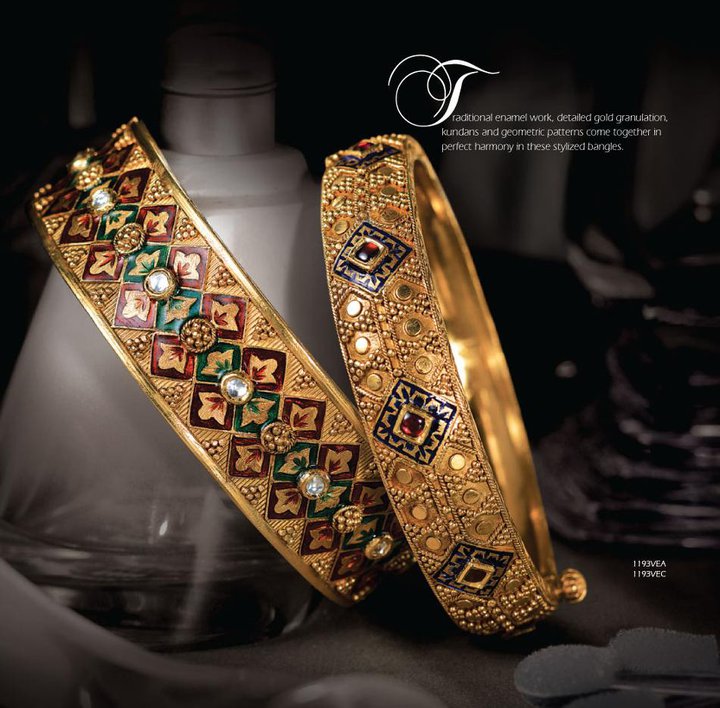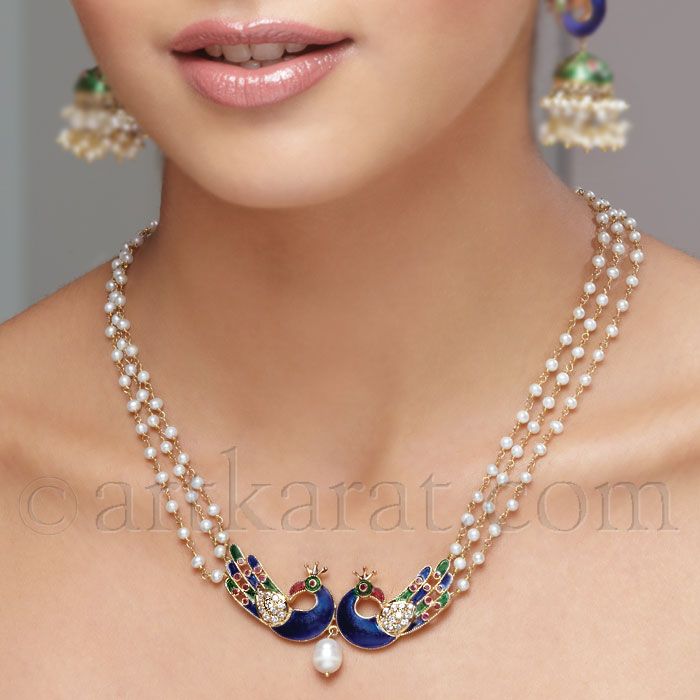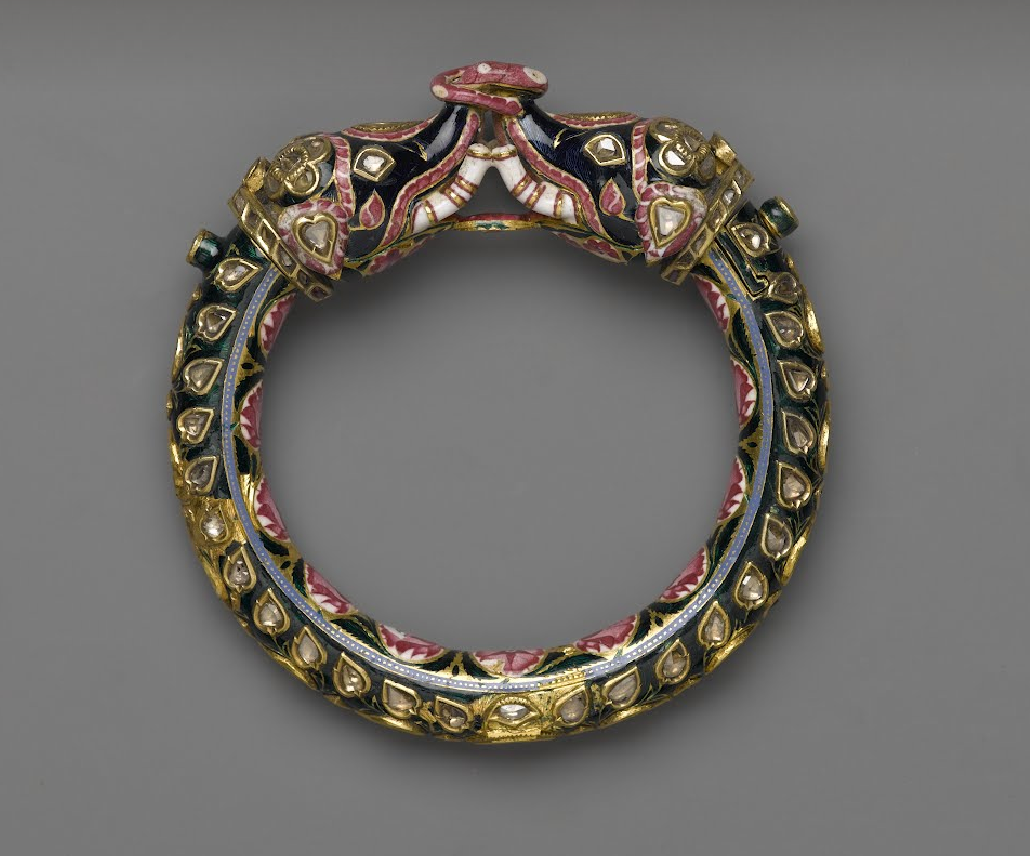Meena work is most often seen on the back of Kundan and Jadau jewelry, where it adds a secret or sometimes reversible element of beauty to the already opulent piece. While it’s not as lavish as a neck full of jewels, Meenakari jewelry is gorgeous, highly-detailed, colorful, and eye-catching.
- Who: Meenakari jewelry
- What: A jewelry style characterized by brightly-colored mineral enameling poured over a precious metal base.
- When: 16th century, under the Mughals.
- Where: Lahore and Jaipur for gold Meenakari. Bikaner and Udaipur for silver meena work.
- Variations: Varanasi Meenakari
- Process: Requires a team of craftspeople each with a specific task.
Enameling has been, throughout history, a popular handicraft and has surfaced during the European Middle Ages, Byzantium, China, as well as South Asia.
Mirza Raja Man Singh, one of the Mughal emperor Akbar's generals, is credited with popularizing the Meenakari form and bringing it to the rest of North India. Soon after he brought master enamelers from Lahore to Jaipur, other regions in North India began to develop their own unique takes on the form including using silver and glass.
Meenkari jewelry consists of decorating precious metals with semiprecious stones and powdered minerals like copper and cobalt. Because the minerals are easily molded and colorful, Meenakari jewelry makers often depict natural scenes, including plants and animals. It is even possibly to see light and shade illustrated in the more detailed pieces.
The most common colors used in meena work are red, blue, and green. The Mughals favored a color palette of white, red, and green and so the Meenakari from Jaipur uses these colors predominantly. Varansi Meenakari, by contrast, is known for its pink hues on white enamel and favors lotus motifs (seen below on the inside of the bangle). This is the most common meena work seen on the back of Kundan and Jadau jewelry today.
Like Jadau jewelry, Meenakari requires a team of skilled craftspeople to create each individual piece. Once the designer submits the sketch for the piece, the sonar forms the metal base. The chhatera engraves into the precious metal and creates grooves and walls to hold color. The meenakar then pours in the colors, usually starting with white and then going on to green, blue, and finally red. The meena piece is fired in a kiln after each color.
The Meenakari enameling on the back of the piece wears down when worn frequently. But rather than lose its shine, Meenakari work becomes brighter with wear. The special minerals used for the enameling do not diminish easily and Meenakari pieces are considered some of the most durable Indian jewelry pieces on the market. This usually results in higher prices for Meenakari jewelry pieces as compared to other jewelry forms.
Sources: Aiaca Online and Cultural India
Photo courtesy of Tanishq, Art Karat, and the Brooklyn Museum




1 thought on “Meenakari Jewelry – Painting with Enamel”
Comments are closed.